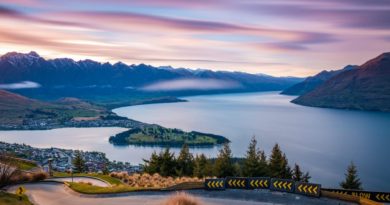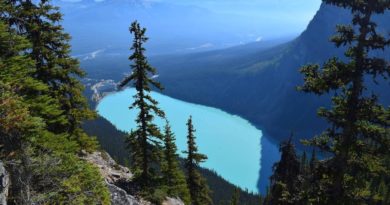A Photographer’s Guide to Visiting Yellowstone in Winter
If Yellowstone National Park is on your bucket list, here’s a little secret – consider visiting this epic outdoor playground, full of geological wonders, natural beauty and abundant wildlife, during the winter months. Cold? Sure. Worth the extra layers? You bet.
Particularly for shutterbugs, Yellowstone National Park winter visits are legendary. From early-morning photo shoots in the Lamar Valley, zooming in on elusive gray wolves as they creep across the sparkling white snow on the hunt, to interesting angles on stunners like Old Faithful, these cooler months are a fantastic time to document life during a Yellowstone winter. That ethereal silence that snow begets, non-existent crowds and roaming wildlife make a Yellowstone National Park photography trip in winter one of the most immersive experiences for a serious photographer. Get up close and personal with bison along the Madison River, capturing their ice-encrusted coats and nostrils blowing steam in the frigid air. Catch a moment in time as herds of elk graze on the floor of Jackson Hole or a geothermal geyser shows off with a magical crystalline spray.

Is West Yellowstone Open in Winter?
Yes, West Yellowstone is open to hardy travelers in wintertime. Between November and March, you’ll fee as if you’ve walked into a winter wonderland. This is as peaceful as Yellowstone gets and it’s your reward for braving “brrrr”-inducing temperatures. The following roads are open to over-snow travel by snow coach and snowmobile most winters:
- West Entrance to Old Faithful
- Mammoth to Old Faithful
- Canyon to Norris
- Canyon to Yellowstone Lake
- Old Faithful to West Thumb
- South Entrance to Yellowstone Lake
- Yellowstone Lake to Lake Butte Overlook

Is Winter a Good Time to Go to Yellowstone for Photography?
So, what is Yellowstone during winter really like? Some might say this is the most genuine time to head to one of America’s most beloved national parks. Natural forces are at play, creating a spectacular backdrop for wildlife and nature photographers. This is the time to witness the Greater Yellowstone Ecosystem and get dramatic shots against winter’s snowy backdrop of elk, bison, bighorn sheep, coyote and more.
Of course, visiting Yellowstone in winter means there will be a fair amount of snow to contend with, so your wintertime Yellowstone safari will rely on private snow coaches to access the park’s interior, where you can capture photos of the Grand Canyon of Yellowstone, Yellowstone Falls and the cosmic colors of Grand Prismatic Spring. You’ll travel in winter-worthy vehicles with large side windows and pop-top roof hatches allowing for 360-degree views of the landscape and animals – and there’s always plenty of space for your camera equipment and winter gear. It’s likely, too, that you’ll have the chance to access parts of the park that most travelers never see, facilitating the one-of-a-kind photographic opportunities you covet.
Even if the drifting snow and rugged landscapes aren’t accessible by land, your Yellowstone safari company can arrange for private helicopter tours for thrilling aerial surveys of the park. Capture unusual perspectives from on high, like Mammoth Hot Springs, spectacular ice displays on frozen Yellowstone Falls and grazing bison and elk herds from above.
Prepare to learn a little (or a lot) while you’re visiting Yellowstone in winter, too. Your superlative guide and expedition leaders will share their limitless knowledge of the natural history and wildlife of Yellowstone and Grand Teton national parks. They’re not only naturalists, but photographers, as well, so they know just where to take you to ensure the best possible photographic opportunities.

Where Can I Photograph Wild Wolves in Yellowstone During Winter?
The Lamar Valley is known as the wolf-watching capital of the world – and likely where you will see the Junction Butte pack of 19 wolves. Forty-one gray wolves from Canada were reintroduced to the park during the winters of 1995-1996 and they’re now well established not only in Yellowstone, but in the Northern Rockies of Montana, Wyoming and Idaho. Of course, with more than 2.2 million acres in Yellowstone itself, plus the surrounding wilderness areas, it’s not always easy to spot these wild wolves.
Winter is certainly the easiest time to spot the wolves, when they’re more active than in the sluggish days of summer. You may be fortunate enough to see them out hunting or having made a kill and out in the open feeding on elk or bison. Most of the wolves in Yellowstone are black, while helps you spy them against the snowy backdrop. As opposed to summer, when they’re seeking out shade, you’re more likely to see the wolves covering a lot of ground in the winter, howling, posturing and chasing each other around.
Your Yellowstone photo guide is in contact communication with local wolf researchers, so they can gain insider knowledge on where the Yellowstone wolves are hanging out. Most photo pro expedition leaders also receive additional training from the WWF’s top scientists, allowing them to share up-to-date knowledge with you during your safari and get right to the wolves’ habitats. In some cases, you may even have the chance to visit the home and gallery of a famed local naturalist-photographer or have them by your side as you aim to capture shots of these elusive animals.
No matter where your safari is headed that day, prepare to get up early – wolves are crepuscular, which means they are most active at dusk and dawn. This means getting to your chosen viewing spot before sunrise, if possible, and in the winter that means it’s going to be cold. Bundle up, prep your hot drinks and head out there. The reward is surely worth it.
In addition to Lamar Valley in the park’s northeast corner, the best locations to see wolves during the winter in Yellowstone are:
- Slough Creek, just east of Lamar Valley (Junction Butte pack)
- Valley of Little America, near Slough Creek (Junction Butte pack)
- Elk Creek, near Tower Junction (Wapiti Lake pack)
- Hellroaring Overlook (Wapiti Lake pack)
- Blacktail Plateau, west of Lava Creek on road between Mammoth and Tower Junction (8 Miles Pack)
- Hayden Valley (Wapiti Lake Pack)
- Grizzly Overlook, Hayden Valley (Wapiti Lake Pack)
- Northeast Park Entrance along Soda Butte Creek (Lamar Canyon Pack)
- West Entrance Road or near Old Faithful (Cougar Creek Pack)

What Are the Best Locations to Take Pictures of the Grand Tetons?
Yellowstone winter photography trips, such as this one from Natural Habitat Adventures, typically include Grand Teton photography and Jackson Hole photography opportunities. The parks go hand in hand, thanks to their close proximity and equally tantalizing views and wildlife.
These conveniently located locations in Grand Teton National Park are a short drive from Jackson, most being off Highway 89. Pull over and capture stunning, wintery shots at:
- Mormon Row – T.A. Moulton Barn: Famous for its historic barns and landmarks and magnificent backdrop
- Snake River Overlook: One of the most iconic views, made famous by Ansel Adams. Arrive early to catch the sun rising over the snow-covered peaks.
- National Elk Refuge: Witness thousands of elk in the valley during the winter, easily spotted against the snow in the morning and evening hours. (You can even take a sleigh ride to see them up close.) Keep an eye out for moose, coyote, bighorn sheep, bison, bald eagles and wolves, too.
- Highway 89: Numerous pull-outs for views between Jackson and Yellowstone National Park, particularly moose at the aptly named Moose Junction.
- Jackson Lake: Snowshoe or cross-country ski along the shore and on the icy surface of the lake for epic snowy photography.
Ready to head out and capture the beauty of winter? When you’re home later on, cozied up around a roaring fire with a mug of something warm at hand, you’ll be so proud of yourself for braving the cold temperatures. Bison trudging across a snowy plain, steamy geothermal springs and hopefully a sly wolf or two – these are the photos that will tell stories for years to come.
About the author: Michelle Peters View all posts by Michelle Peters
From her home office in northwest Seattle, Michelle has been crafting compelling content about travel destinations worldwide for more than 20 years. In those two decades, she made the leap from editor for the hotel and resort department at Virtuoso to a full-time freelance editor and writer—and never looked back.




